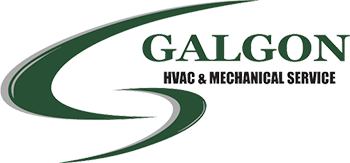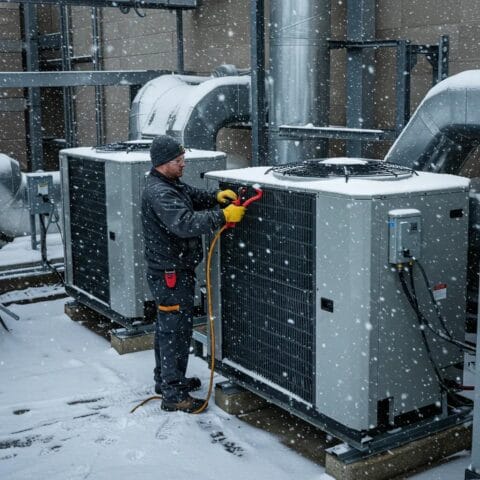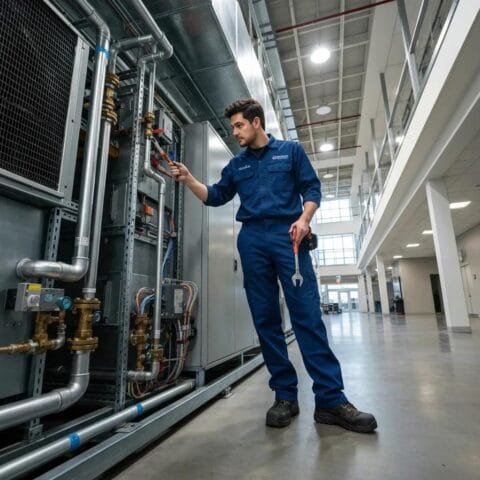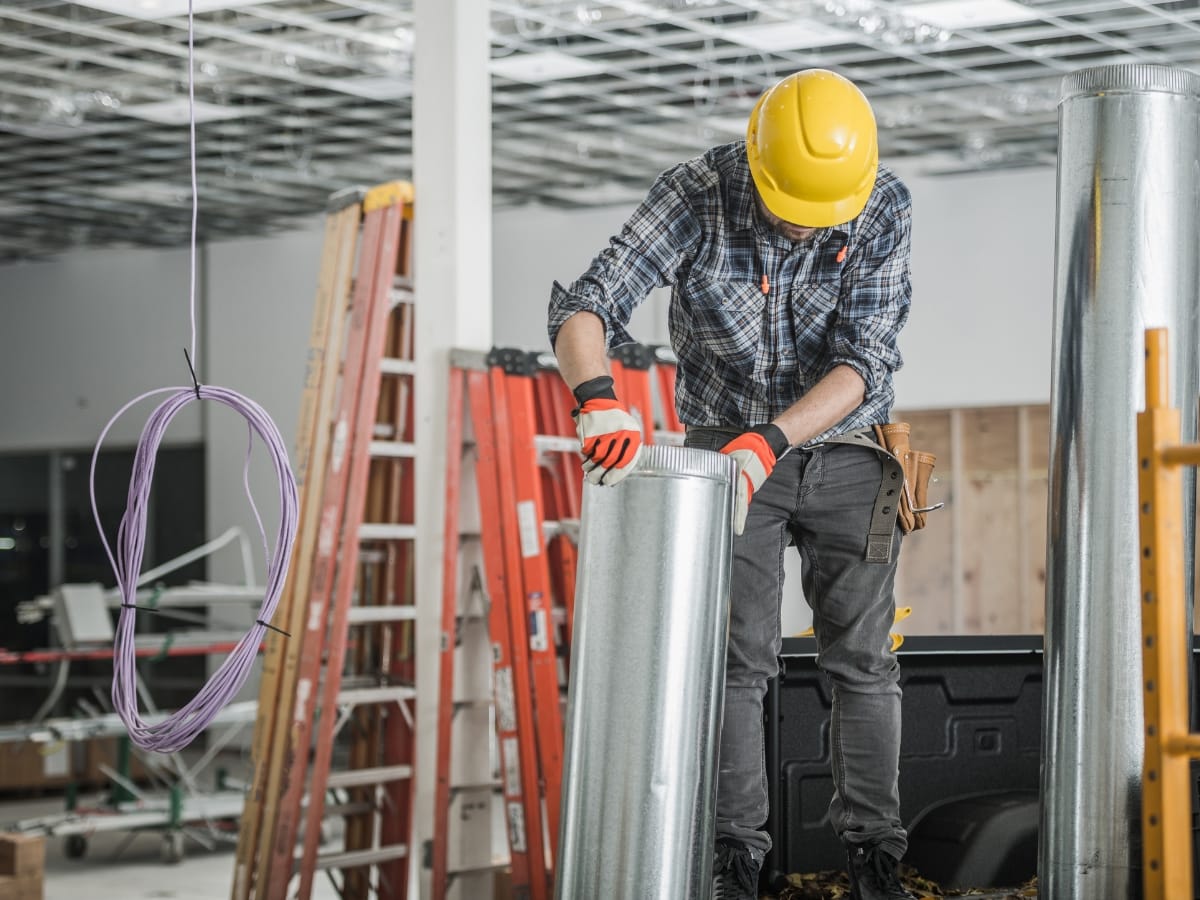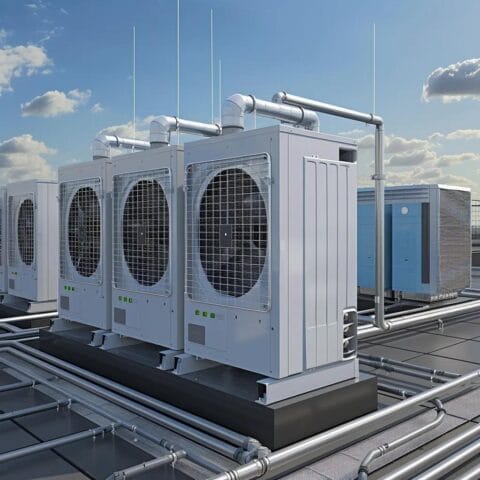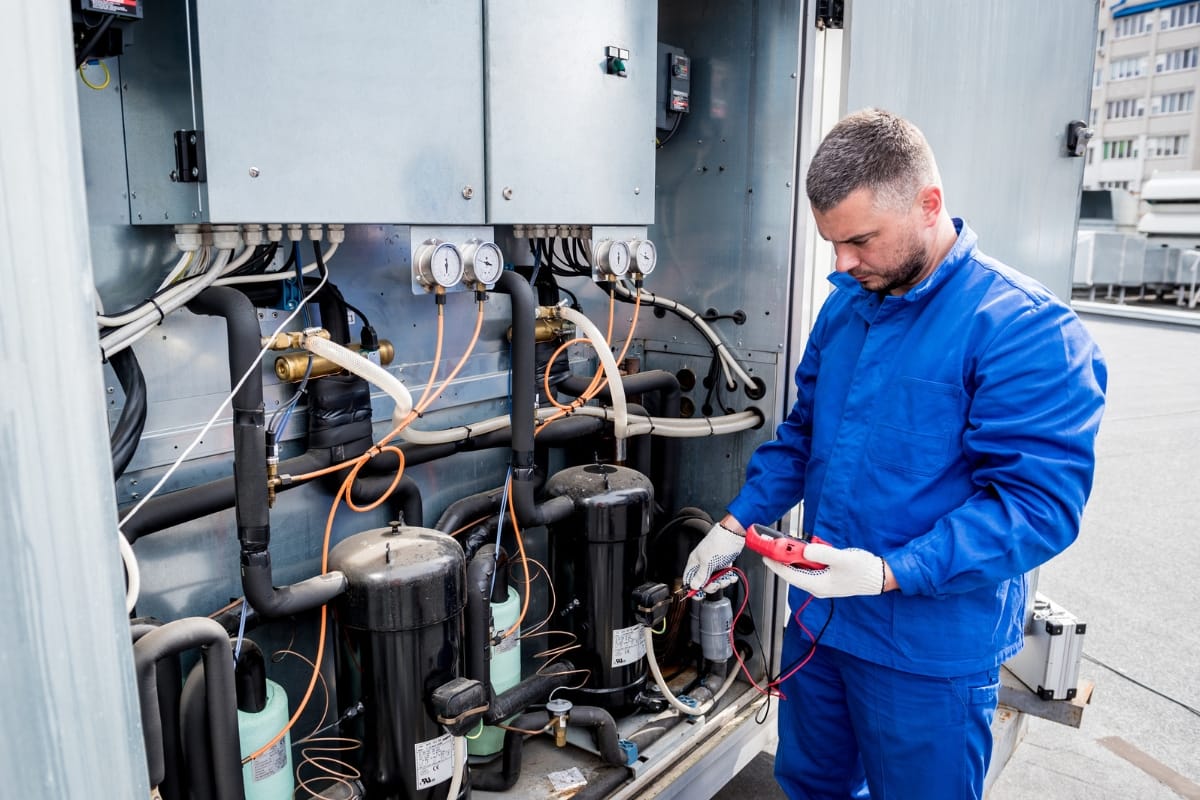In the modern workplace, maintaining a comfortable and healthy environment is paramount for productivity and employee well-being. Achieving workplace HVAC efficiency goes beyond merely regulating temperature; it encompasses ensuring optimal air quality, energy efficiency, and adherence to health and safety standards.
A well-maintained HVAC system can significantly reduce operational costs, minimize environmental impact, and promote a healthier work atmosphere. In this guide, we’ll explore the critical aspects of achieving HVAC efficiency in the workplace while upholding the highest standards of health and safety.
From routine maintenance and energy-saving tips to advanced air purification technologies, discover how to create a safer, more efficient, and healthier workplace for everyone.
Maximize Health and Safety: Optimize Your Workplace HVAC Today
Understanding HVAC Efficiency
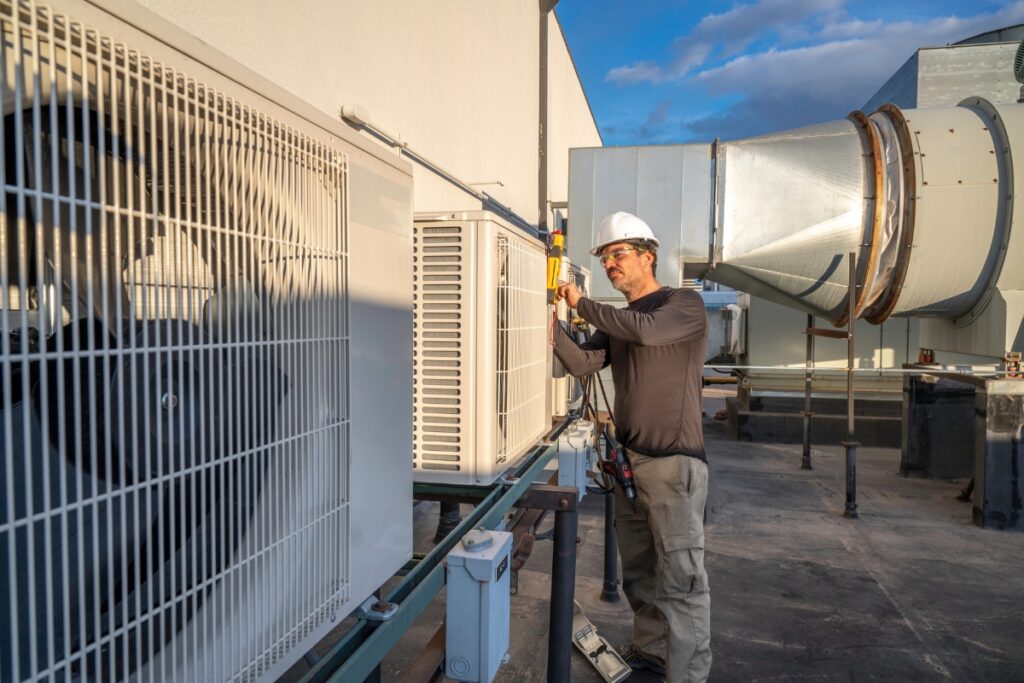
When it comes to workplace health and safety, the efficiency of HVAC (Heating, Ventilation, and Air Conditioning) systems plays a crucial role. Understanding HVAC efficiency is essential for maintaining a comfortable and safe working environment for employees.
Efficient HVAC systems not only contribute to a productive workplace but also play a significant role in ensuring the health and safety of employees. By regulating indoor air quality, controlling temperature, and managing ventilation, HVAC systems create a comfortable and healthy workspace.
Workplace health and safety regulations often highlight the importance of maintaining proper HVAC efficiency. Regular maintenance, timely repairs, and upgrades to HVAC systems are essential to ensure optimal performance and compliance with safety standards.
Improving HVAC efficiency not only enhances employee comfort but also leads to cost savings for businesses. Energy-efficient HVAC systems consume less power, resulting in reduced utility bills and environmental impact.
Properly functioning HVAC systems help prevent issues such as poor indoor air quality, temperature fluctuations, and humidity imbalances, which can impact employee health and productivity. By prioritizing HVAC efficiency, businesses can create a conducive work environment that promotes well-being and safety.
Health Considerations in HVAC Systems

When it comes to workplace health and safety, considering health implications in HVAC systems is crucial. HVAC systems play a significant role in maintaining indoor air quality, which directly impacts the well-being of employees.
Workplace health and safety regulations emphasize the importance of clean air to prevent respiratory issues and promote overall health. HVAC systems are designed to regulate temperature and humidity levels while also filtering out common indoor air pollutants.
Dust and allergens are among the primary contaminants that can circulate within HVAC systems. Regular maintenance and filter replacement help in reducing the presence of these particles in the air, creating a healthier work environment for employees.
Chemical pollutants, such as volatile organic compounds (VOCs) from cleaning agents or building materials, can also affect indoor air quality. Proper ventilation and air circulation provided by HVAC systems are essential in minimizing the concentration of these harmful substances.
Biological contaminants like mold spores and bacteria can thrive in damp HVAC components, leading to respiratory issues and allergies among employees. Routine inspection and cleaning of HVAC systems are necessary to prevent the spread of biological pollutants.
Neglecting HVAC maintenance can lead to serious health impacts on employees. Poorly maintained systems can circulate contaminated air, leading to respiratory issues, exacerbating allergies and asthma symptoms, and even contributing to sick building syndrome.
Incorporating workplace health and safety practices into HVAC maintenance ensures that employees are protected from potential health hazards related to indoor air quality. By optimizing HVAC efficiency and maintaining a focus on health considerations, organizations can foster a safe and healthy work environment for their employees.
Safety Excellence in HVAC Systems
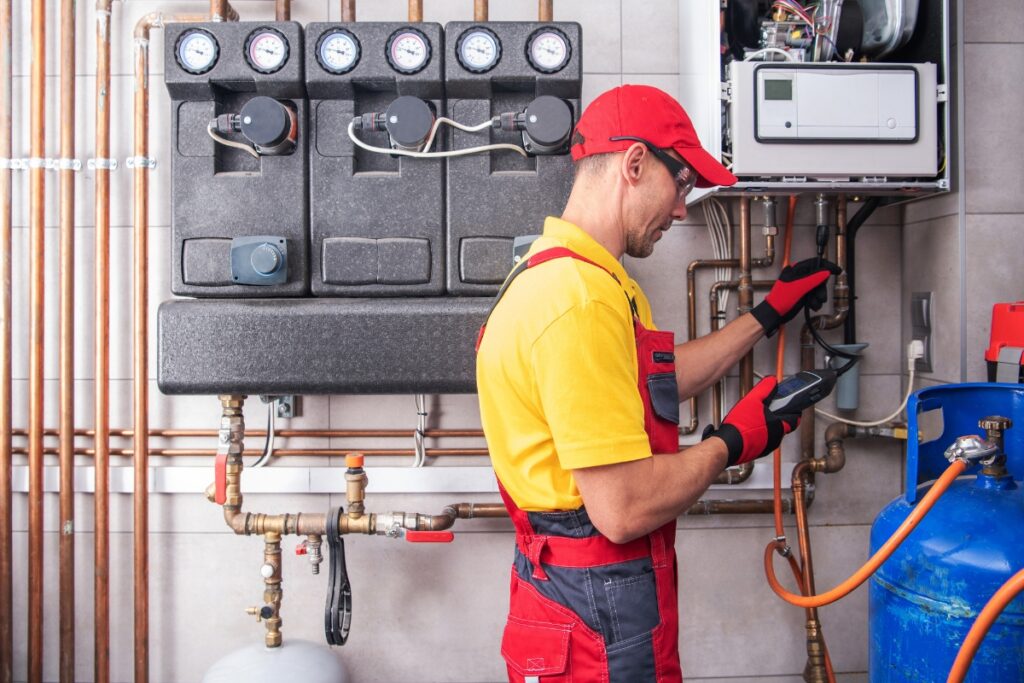
When it comes to workplace health and safety, HVAC systems play a crucial role in maintaining a comfortable and safe environment for employees. Adhering to HVAC system safety standards and regulations is essential to prevent common safety hazards that may arise.
Electrical risks are one of the primary concerns when it comes to HVAC systems. Faulty wiring, overloaded circuits, or improper installation can lead to electrical hazards. Regular inspections by qualified professionals can help identify and address these issues promptly.
Fire hazards are another significant risk associated with HVAC systems. Poor maintenance, malfunctioning components, or even flammable materials near HVAC units can increase the risk of fires. Implementing best practices for maintaining safety, such as regular cleaning, checking for leaks, and ensuring proper ventilation, can reduce the likelihood of fire incidents.
Mechanical failures in HVAC systems can result in breakdowns or malfunctions that compromise indoor air quality and temperature control. Professional servicing by certified technicians is vital to keep HVAC systems running efficiently and safely. Routine maintenance can help prevent unexpected failures and ensure optimal performance.
In addition to proactive maintenance, having emergency protocols in place is crucial for workplace health and safety. Employees should be trained on how to respond to HVAC-related emergencies, such as gas leaks, smoke detection, or system malfunctions. Clear evacuation procedures and regular drills can help mitigate risks during emergency situations.
Strategies for Enhancing HVAC Efficiency
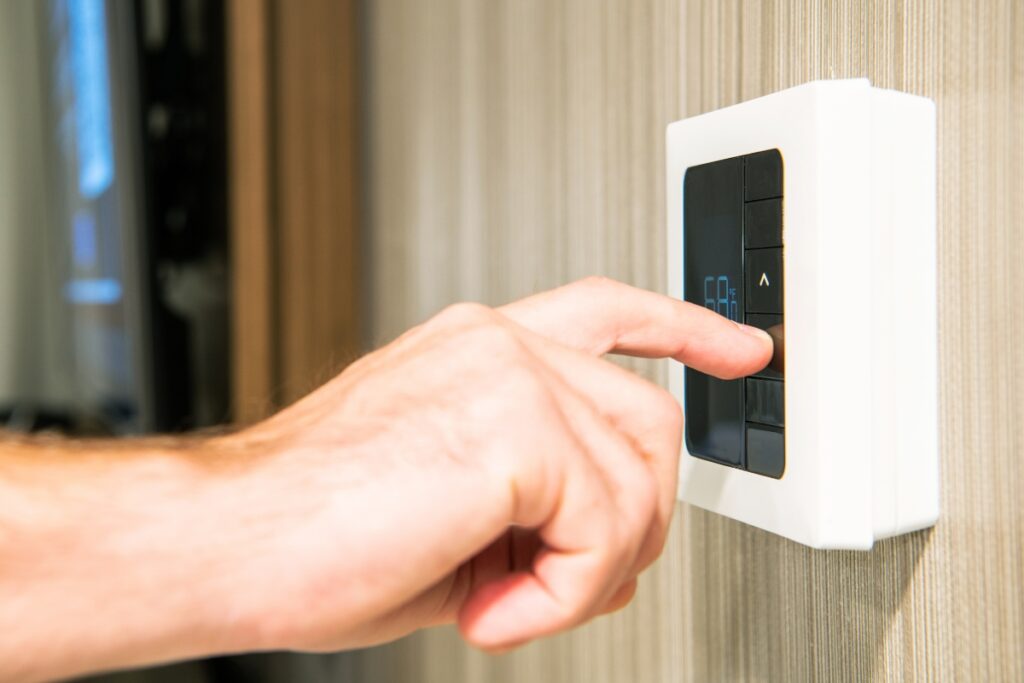
When it comes to workplace health and safety, optimizing HVAC efficiency plays a crucial role. By implementing strategies to enhance HVAC efficiency, not only can you create a comfortable working environment but also promote the well-being of employees. Let’s delve into some effective strategies that can help achieve this synergy between workplace HVAC efficiency and health and safety excellence.
- Regular Maintenance: Scheduled maintenance of HVAC systems is essential to ensure they operate at peak efficiency. This includes cleaning or replacing filters, checking for leakages, and calibrating thermostats. By keeping the system well-maintained, you can prevent breakdowns and maintain optimal indoor air quality, contributing to a healthier work environment.
- Smart Thermostats: Investing in programmable or smart thermostats allows for better control over temperature settings based on occupancy patterns. By adjusting temperatures according to working hours, you can reduce energy wastage and create a comfortable atmosphere for employees, which is vital for their health and productivity.
- Proper Insulation: Ensuring that the workplace is well-insulated helps in retaining the conditioned air generated by the HVAC system. Good insulation prevents energy losses, reduces the workload on HVAC units, and maintains consistent temperatures throughout the premises, promoting a safe and healthy environment for all occupants.
- Air Quality Monitoring: Monitoring indoor air quality is essential for maintaining a healthy workplace. Implementing sensors to detect pollutants, humidity levels, and ventilation effectiveness can help in identifying potential issues early on. By ensuring good air quality, you can enhance the overall health and well-being of employees.
- Employee Training: Educating employees on the importance of HVAC efficiency and how they can contribute to maintaining it can significantly impact energy conservation efforts. Simple practices like closing windows when the HVAC is running or reporting any unusual system behavior promptly can go a long way in ensuring optimal performance and safety.
- Energy-Efficient Upgrades: Consider upgrading to energy-efficient HVAC systems that comply with industry standards. Energy-efficient units not only reduce operating costs but also minimize environmental impact. Additionally, utilizing energy recovery systems can further enhance efficiency by recovering waste heat or cool air, improving overall HVAC performance.
By implementing these strategies for enhancing HVAC efficiency in the workplace, you can create a conducive environment that prioritizes both health and safety excellence. A well-maintained HVAC system not only contributes to employee well-being but also reflects a commitment to sustainability and resource efficiency.
Integrating Health and Safety with HVAC Efficiency
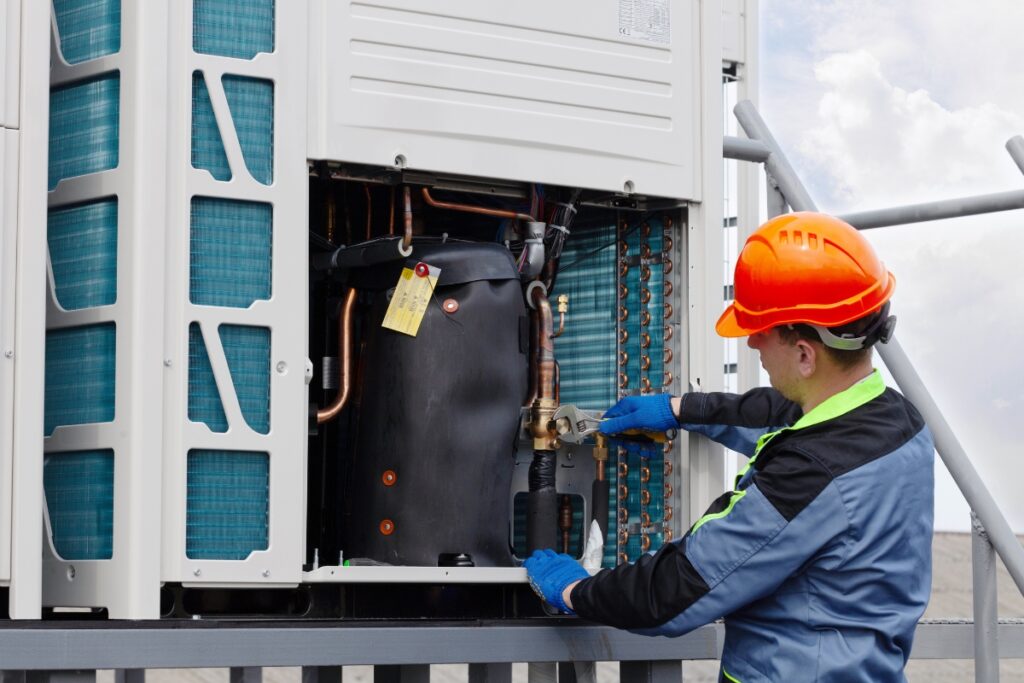
When it comes to workplace HVAC efficiency, integrating health and safety practices is crucial for creating a safe and comfortable working environment. By taking a holistic approach to HVAC management, companies can ensure that their systems not only operate efficiently but also promote the well-being of their employees.
Training and education play a vital role in achieving this balance. By providing staff with the necessary knowledge and skills, organizations can empower employees to understand the importance of proper HVAC maintenance and operation in relation to health and safety standards. This proactive approach not only enhances workplace safety but also contributes to improved HVAC efficiency in the long run.
Monitoring is another key aspect of integrating health and safety with HVAC efficiency. Regular monitoring of indoor air quality, ventilation systems, and temperature control allows companies to identify potential issues early on and take corrective measures promptly.
This proactive monitoring not only helps in maintaining a healthy work environment but also ensures that HVAC systems are operating at their peak performance, leading to energy savings and reduced operational costs.
Continuous improvement is essential for sustaining the integration of health and safety with HVAC efficiency. By analyzing data, gathering feedback from employees, and implementing best practices, organizations can continuously enhance their HVAC management strategies.
This iterative process not only fosters a culture of health and safety excellence but also drives ongoing improvements in HVAC efficiency, resulting in a win-win situation for both employees and the company.
Wrapping Up: Prioritize HVAC Management For Workplace Efficiency
When it comes to workplace efficiency, prioritizing HVAC management plays a crucial role. A holistic approach that integrates workplace health and safety practices with HVAC management not only ensures a comfortable environment for employees but also boosts overall productivity.
For top-tier HVAC solutions that prioritize both performance and well-being, choose Galgon HVAC & Mechanical Service. Our experienced team is committed to providing exceptional service tailored to your organization’s needs. Contact us today at (404) 352-1500 or visit our website to fill out the form for a service request or a price quote. Let Galgon HVAC & Mechanical Service ensure your workplace remains comfortable, efficient, and safe.
